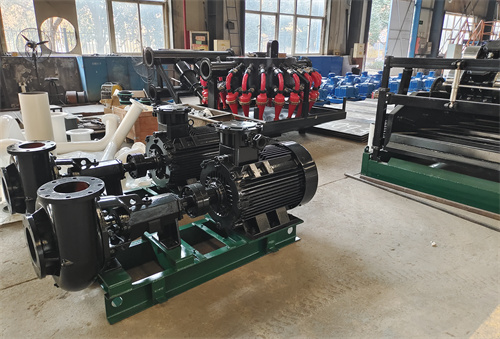

Drilling Mud Cleaning Systems: Enhancing Efficiency and Environmental Compliance in Oilfield Operations
Pub Date:Apr 23, 2025 | Views:85 |
Drilling mud is essential for wellbore stability, lubrication, and cuttings removal during drilling operations. However, as drilling progresses, the mud becomes contaminated with drill cuttings, sand, and other solids, reducing its effectiveness. A drilling mud cleaning system is crucial for maintaining mud quality, reducing waste, and optimizing drilling performance. This article explores the components, working principles, and benefits of modern drilling mud cleaning systems.

Contaminated drilling mud can lead to:
Reduced drilling efficiency – Excessive solids increase viscosity, slowing penetration rates.
Equipment wear – Abrasive particles damage pumps, valves, and other components.
Higher costs – Poor mud quality leads to increased fluid loss and disposal expenses.
Environmental risks – Untreated mud discharge can violate regulations.
A well-designed mud cleaning system ensures proper solids control, extending mud life and minimizing environmental impact.
Function: Primary solids removal using vibrating screens to separate larger cuttings.
Types: Linear motion, elliptical motion, and balanced elliptical shakers.
Performance Factors: Screen mesh size, vibration intensity, and flow rate.
Desanders (10-50 micron removal): Hydrocyclones remove medium-sized solids.
Desilters (5-10 micron removal): Fine solids separation using smaller hydrocyclones.
Applications: Used after shale shakers for secondary purification.
Function: Integrates shale shakers and hydrocyclones for multi-stage solids control.
Advantages: Efficient removal of both coarse and fine particles.
Function: High-speed rotation separates ultra-fine solids (2-5 microns) and recovers barite.
Types: Decanter centrifuges (for weighted mud) and vertical cuttings dryers (for waste reduction).
Benefits: Reduces waste volume and allows barite reuse.
Function: Removes entrained gases (e.g., methane, H₂S) to prevent well control issues.
Types: Vacuum and atmospheric degassers.
Primary Separation: Mud flows over shale shakers, removing large cuttings.
Secondary Cleaning: Desanders and desilters eliminate finer solids.
Fine Solids Removal: Centrifuges process the mud for ultra-fine particle separation.
Degassing: If needed, degassers remove hazardous gases before recirculation.
Mud Reuse or Disposal: Cleaned mud is reused, while separated solids are processed for disposal.
✔ Improved Drilling Performance – Lower solids content enhances ROP (rate of penetration).
✔ Cost Savings – Reduces mud consumption and disposal costs.
✔ Equipment Longevity – Minimizes wear on pumps, drill bits, and other components.
✔ Environmental Compliance – Ensures proper waste management and reduces harmful discharges.
✔ Barite Recovery – Centrifuges recover weighting agents, cutting material costs.
Automated Solids Control Systems: AI-driven monitoring for real-time adjustments.
Eco-Friendly Mud Treatments: Biodegradable additives and closed-loop systems.
High-G Dryers: Advanced centrifuges for near-dry cuttings disposal.
Offshore Discharge Limits: OSPAR and EPA regulations require low oil-on-cuttings (OOC) levels.
Landfill Disposal: Treated cuttings must meet local hazardous waste standards.
Zero-Discharge Policies: Some regions mandate full recycling or reinjection of drilling waste.